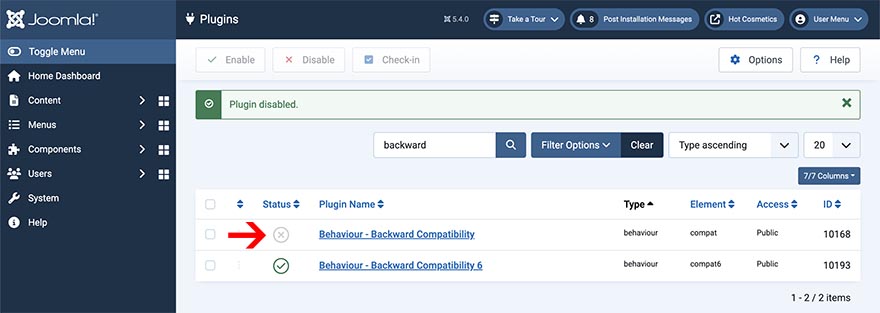
The purpose of the Joomla plugin Behaviour - Backward Compatibility is to help you in the transition period between two major Joomla upgrades. It contains references to the classes and functions that are deprecated and that have been removed in the current Joomla version. So, it's recommended to keep this plugin disabled, unless your template or one of the extensions you are using relies on it. However, in order to upgrade to Joomla 6, it's necessary to disable this plugin.
We had one Backward Compatibility since Joomla 4. Recently, Joomla 5.4.0 brought another Backward Compatibility 6 plugin. During the migration from Joomla 5 to Joomla 6, the old Backward Compatibility must be disabled, while the new Backward Compatibility 6 plugin must be enabled.
Disabling Backward Compatibility Plugin
Disabling the Backward Compatibility is as easy as disabling any other plugin. However, it's recommended to do it on a staging website or at least have a backup of your entire website ready. So, you go to System > Manage > Plugins, find the plugin, and disable it. On some rare occasions, you can end up with a broken site. You guess, re-enabling the disabled Backward Compatibility will restore your website. And you are correct, but how to enable it on a broken Joomla administrator panel? Well, you may restore your website from backups. But what if you didn't make a backup?
Re-enabling the Backward Compatibility Plugin
Even in an inconvenient situation when your Joomla administrator panel is broken due to a disabled Backward Compatibility plugin, you can still restore your website relatively easily. To do this, you must change a single value in the Joomla database. Editing Joomla's database can be done using the PhpMyAdmin tool that almost all hosting providers provide.
1. Access PhpMyAdmin and Locate Database
Log in to the PhpMyAdmin from your web hosting provider's control panel. In the left-hand side pane, locate your Joomla database (if you don't know your database name, you can see it in System > Global Configuration > Server > Database Name). Click on your Joomla database name.
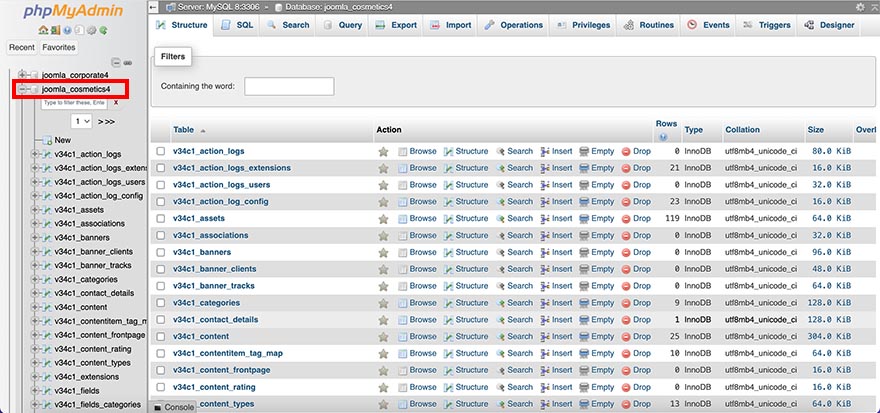
2. Locate Extensions Table
From the list of the database tables, locate table XXXX_extensions (XXXX_ is your database prefix, you can see it in System > Global Configuration > Server > Database Tables Prefix). Click on the Browse link next to the XXXX_extensions table.
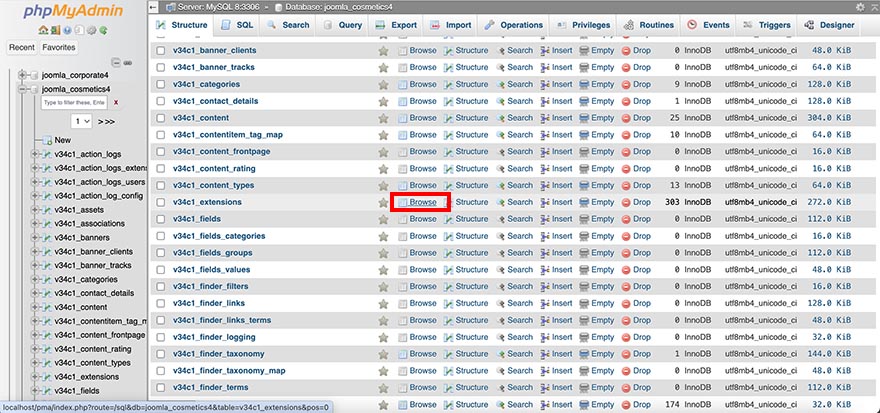
3. Filter Rows to Find the Behaviour Compatibility Plugin
In the "Number of rows" select 500 to see all the rows. In the "Filter rows" field, enter "plg_behaviour_compat". If you are on Joomla 5.4.0, you will see two rows (old and new plugin). On all earlier versions, only one row will be displayed.
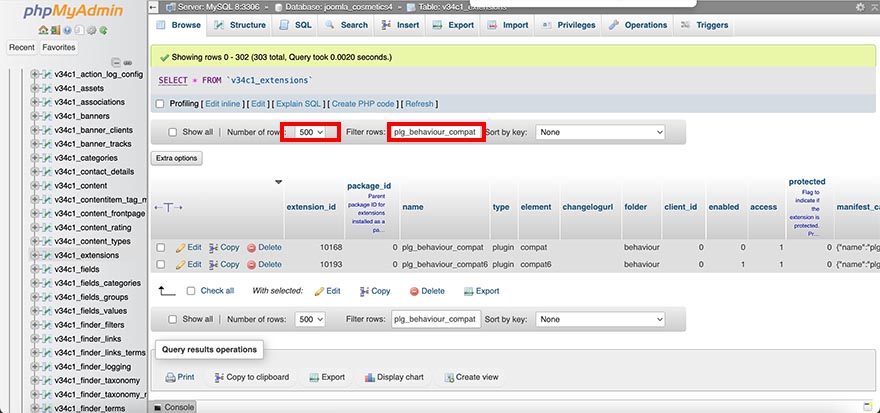
4. Re-enable the Behaviour Compatibility Plugin in Database
Under the "enabled" column for the row "plg_behaviour_compat" (this is the plugin you disabled before), you will see the value 0. Double-click it and change the value from 0 to 1. To save it, click Enter.
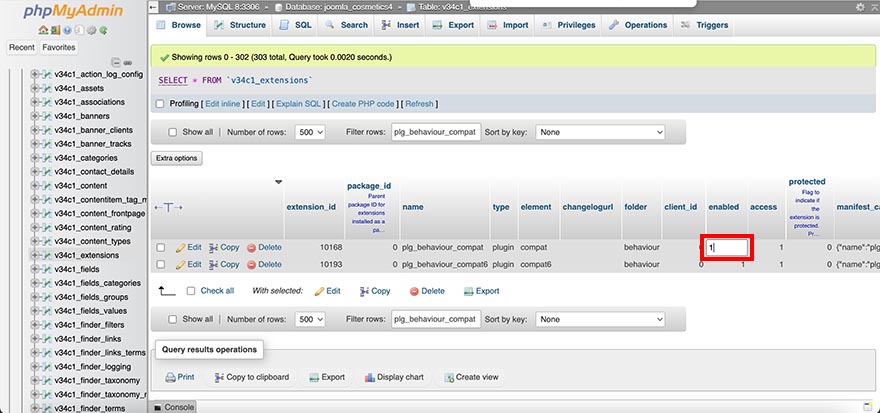
That should be it. The Backward Compatibility is now enabled again, so you should expect your website to work normally, as before disabling the plugin. In the future, and before disabling the plugin again, you should identify the outdated Joomla extension that still relies on the Backward Compatibility plugin. Upgrade this extension or replace it with a similar extension. Consult the extension developers about this if necessary.
If you are starting a new Joomla website, consider one of our Joomla templates because all our templates and extensions are independent of the Backward Compatibility plugin. Therefore, the compatibility with future Joomla versions is guaranteed.